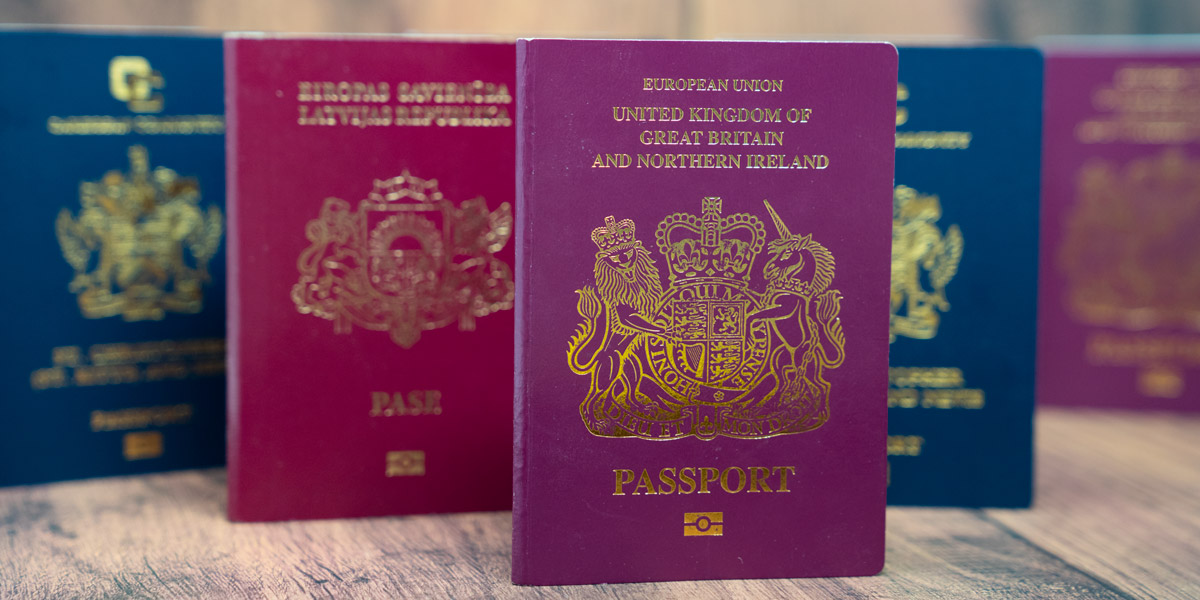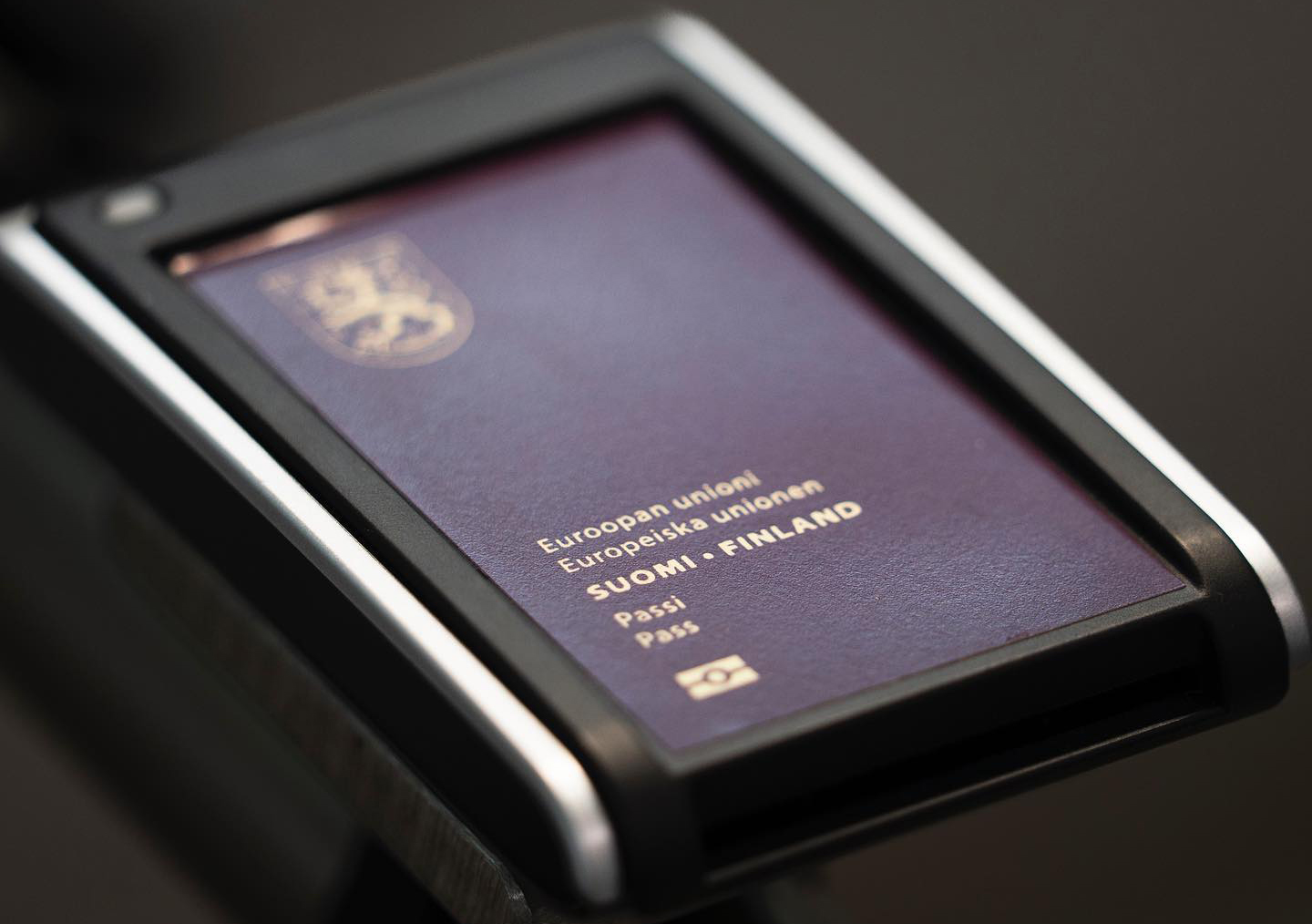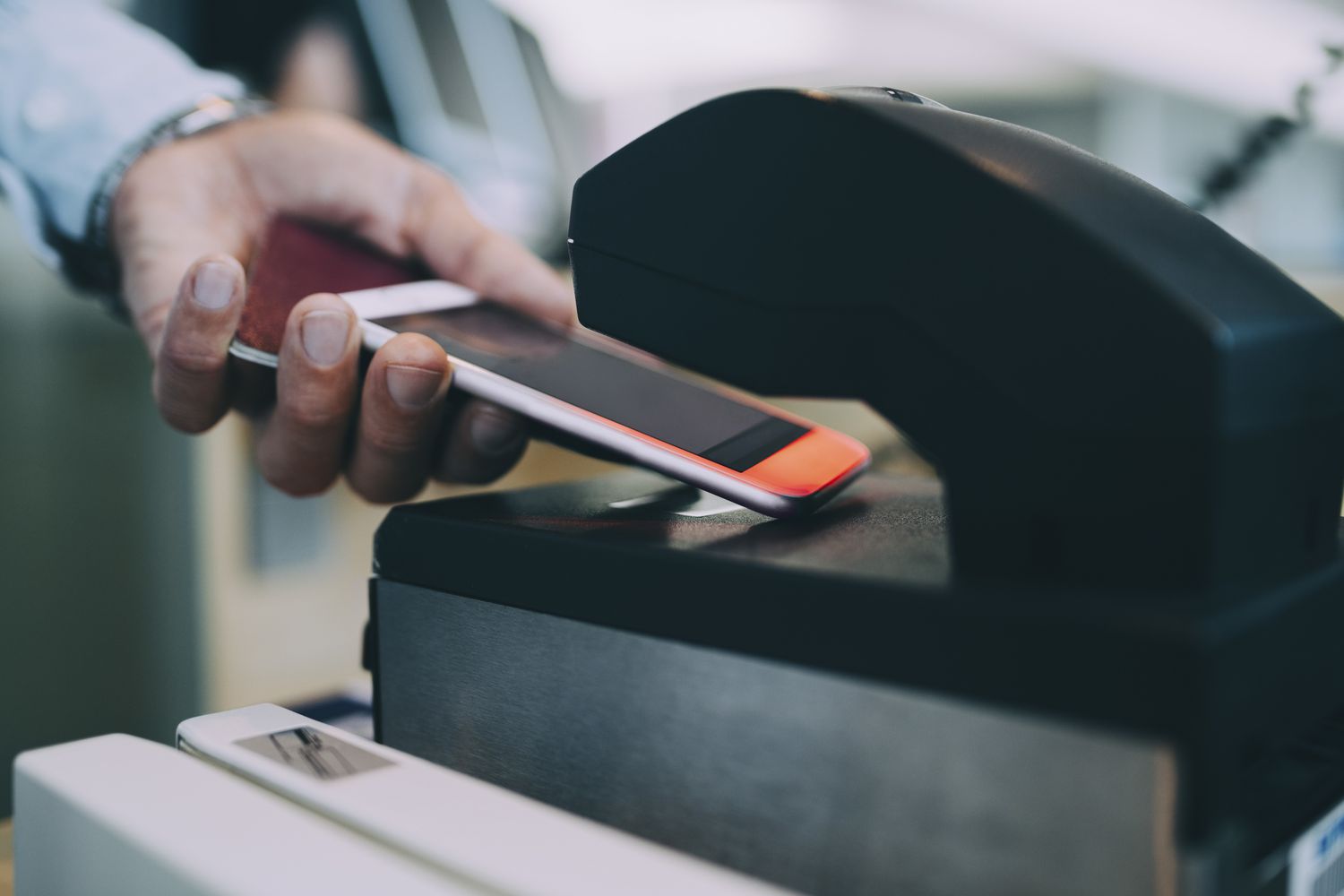Why Digital Passports Are The Future Of Traveling
It's finally here: digital passports! The sole exception is if you're a Finn taking a flight from Helsinki to London. Passengers on select Finnair flights can now breeze through customs if they register a digital version of their passport in advance, according to a world-leading pilot program by the Finnish Border Guard.
Author:Velma BattleReviewer:Michael RachalOct 01, 202316.5K Shares295K Views

It's finally here: digital passports! The sole exception is if you're a Finn taking a flight from Helsinki to London.
Passengers on select Finnair flights can now breeze through customs if they register a digital version of their passport in advance, according to a world-leading pilot program by the Finnish Border Guard.
It is highly likely that additional places will emulate the innovation-driven Nordic nation.
Recently, Singapore's Changi Airport made the announcement that it will implement a passport-free system by the year 2024. Singaporeans are granted an extensive range of travelprivileges, surpassing those of any other nation or city-state, since they currently benefit from visa-free entry and visa-on-demand options to a greater number of places. This is the reason why it ranks first on a 2023 compilation of the world's "most powerful" passports.
The European Union wants at least 80% of the 27-nation bloc's people to use a digital ID by 2030 while the trial is taking place in Finland.
What Is A Digital Passport?
Digital passports, often referred to as digital identities or e-passports, are safe and reliable electronic representations of a person's identification. It is not a physical document, unlike a passport, but rather a group of digital credentials that are kept electronically. These credentials could contain private information, biometric information, and cryptographic keys that could be used to confirm and authenticate the holder's identity.
Components Of A Digital Passport
- Digital Signatures- Digital passports may have digital signatures to ensure the authenticity of the information they contain.
- Cryptographic Keys- These are used to create a secure connection between the passport holder and a verifying authority.
- Biometric Data- To enhance security, digital passports often incorporate biometric data like fingerprints or facial recognition.
- Personal Information- A digital passport typically includes basic personal information such as your name, date of birth, and address.
The Pilot Program
Only Finnish nationals are eligible to participate in the pilot program, which launched at the end of August. Finnair, the airport operator Finavia, and the Finnish police are all working together to make this a reality at Helsinki Airport. Finnair travelers visiting three airports in the United Kingdom can use the new voluntary "Digital Travel Credential" (DTC) to speed through customs and immigration until the end of February 2024.
The pilot project is being co-funded by the European Union with €2.3 million ($2.5 million). The European Union is preparing further pilot projects for Zagreb Franjo Tuman Airport in Croatia and Schiphol Amsterdam Airport in the Netherlands, in addition to the six-month trial in Helsinki.
The eIDAS Regulation, which was passed in 2014, has as its main objective the development of a single framework for digital identity across all of Europe. No matter where in Europe they occur, the regulation intends to make electronic transactions between businesses and individuals safer, quicker, and more efficient.
The language used to describe electronic credentials can be difficult to understand. A biometric passport, often known as an e-passport, is a conventional passport booklet with an integrated microchip holding some of the particular physical characteristics of the passenger. This is not the same as Europe's DTC, an electronic credential kept on a phone.
Nowadays, the majority of nations in the globe issue some kind of electronic passport, which can usually be recognized by the biometric camera emblem engraved on the cover. A passport is harder to copy or fake because of the RFID chip that contains biometric information.
Default biometric passports have been issued by the US since 2007. The initial e-passport will be phased out as the primary travel document in the United States in 2021 in favor of the more modern Next Generation Passport. The main distinction is its polycarbonate data page, which resembles a credit card or a passport card more than a passport book. The layers of the plastic data page are bonded together and cannot be detached without damaging the page, increasing the passport's integrity and endurance.
How Do Digital Passports Work?
On August 28, Finnish travelers on Finnair flights to London, Edinburgh, or Manchester could begin using the DTC experimental program. Finnish nationals are the only ones who can use it.
The FIN DTC Pilot digital travel document appmust first be downloaded on a smartphone from the Google Play Store or Apple App Store if a traveler wants to volunteer. Before installing the software, you must activate a PIN number, fingerprint, or face ID phone screen locking method in order to utilize it.
The next step is to register with the police at the license services located at Vantaa Main Police Station. To produce the digital version of this, you must make an appointment and bring a current physical passport. You will be required to sign a consent form and have your face photographed upon registration in order to facilitate facial recognition.
After registering with the police once, passengers on direct Finnair flights between Helsinki Airport and the United Kingdom can use DTC until the trial finishes at the end of February 2024.
Each time you travel, you will be required to submit your data to the Finnish Border Guard 36 to 4 hours prior to your flight via the app.
How Does A Digital Passport Work At The Airport?
The DTC is "a digital version of a physical passport and is equally reliable," according to the Finnish Border Guard, which also claims that it "allows smooth and quick border crossings without compromising security."
But what does that actually mean for visitors when they get to the airport?
There are currently designated special lines set up at Helsinki Airport for volunteers testing the service when Finnish travelers depart for the UK.
When you register with the police, a border officer will match your photo to the DTC photo that was taken at that time. You'll need to stare into a camera after placing your passport on a different reader. You will have passed border control once cleared.
However, the pilot program only applies to Helsinki, and you will still need to abide by local UK authorities' guidance.
Benefits Of Digital Passports
The adoption of digital passports offers several advantages:
Convenience
Digital passports eliminate the need to carry physical documents, reducing the risk of loss or theft. They also simplify identity verification processes, making them quicker and more efficient.
Enhanced Security
Biometric data and cryptographic techniques make digital passports highly secure, reducing the risk of identity theft and fraud.
Efficiency
Digital passports can streamline various processes, from airport security checks to online transactions, saving both time and resources.
Accessibility
Digital passports can be accessed and verified remotely, making it easier for individuals to access services and interact with organizations.
Challenges And Concerns
While digital passports offer numerous benefits, they also raise important challenges and concerns.
Privacy
Storing sensitive biometric data and personal information electronically raises privacy concerns. There is a risk that this data could be misused or accessed by unauthorized parties.
Security
Digital passports are susceptible to hacking and cyberattacks. A breach of a digital passport could lead to identity theft or other security issues.
Inclusivity
Not everyone has access to the technology required for digital passports, potentially creating a digital divide and excluding marginalized communities.
Standardization
There is a lack of global standardization for digital passports, which could complicate international travel and interoperability.
The Role Of Blockchain
Blockchain technology has the potential to address some of the challenges associated with digital passports. Blockchain offers secure and transparent record-keeping, making it an ideal solution for storing and verifying identity information.
Decentralization
Blockchain-based digital passports can be decentralized, reducing the risk of a single point of failure or data breach.
Transparency
The transparent nature of blockchain allows individuals to have greater control over their identity information and who can access it.
Interoperability
Blockchain can facilitate interoperability between different digital passport systems, promoting international acceptance and travel.
Future Trends And Considerations
Initially embraced only by Finland, this technological revolution has since spread. In the fall, Croatia and the Netherlands both want to launch trial programs with similar aims. The European Union is providing funding for each country's pilot program in an effort to meet its ambitious goal of having at least 80% of EU residents use a digital identity by 2030 in order to gain access to essential public and private services such as electronic healthrecords and bicycle rentals. The potential for future deployment of digital passports across the E.U. will be informed by the success of the pilot programs in the three countries.
This technology has potential applications beyond passports, including paperless visas and digital driver's licenses. Although it is impossible to predict the future, the transition to digital passports will be a gradual process requiring cooperation between governments, institutions, technology providers, and the general public. Similar passport digitization initiatives are currently underway in Poland, South Korea, Australia, the United Kingdom, and the United States.
As digital passports continue to evolve, several trends and considerations will shape their future:
Biometric Advancements
Advancements in biometric technology will enhance the accuracy and security of digital passports. Most nations in the world now issue some kind of electronic passport, which may be recognized by the biometric camera symbol written on the cover. A passport is more challenging to copy or fake because of the RFID chip holding biometric information.
American citizens are now automatically issued biometric passports as of 2007. The first e-passport was replaced by the more modern Next Generation Passport as the primary travel document in the United States in 2021. Its polycarbonate data page, which feels more like a credit card than a passport book, is the most obvious distinction. Because its layers are fused together and cannot be detached without damaging the page, the plastic data page improves the integrity and durability of the passport.
Cross-Border Collaboration
Countries and international organizations will need to collaborate to establish common standards for digital passports to facilitate cross-border travel and transactions.
Privacy Regulations
Stricter privacy regulations will be necessary to protect individuals' identity information stored in digital passports.
Education And Inclusivity
Efforts to educate the public and ensure inclusivity for all individuals, including those without access to technology, will be crucial.
People Also Ask
What Is The Meaning Of EPassport?
The term "e-passport," "electronic passport," or "biometric passport" refers to a travel document that contains biometric information in addition to identity information such as passport number, name, surname, nationality, and date of birth.
How Much Is A Digital Passport?
Renew online
Use this service to renew your passport online. It costs £82.50. You'll need a digital photo.
How Long Does It Take To Get A Digital Passport?
You should anticipate up to 10 weeks for an online passport renewal, according to the government website. When renewing a passport on paper, the procedure can take up to 10 weeks from the time that the HM Passport Office receives your old passport and any necessary supporting documentation.
Conclusion
The emergence of digital passports represents a significant shift in how we define and verify identity in the digital age. While they offer numerous benefits in terms of convenience, security, and efficiency, they also raise important concerns related to privacy, security, and inclusivity.
As technology continues to advance and global standards are established, digital passports have the potential to revolutionize the way we interact with the world while safeguarding our identities in an increasingly digital landscape. It is essential to strike a balance between harnessing the potential of digital passports and addressing the challenges they pose to ensure a secure and equitable future for all.
Passengers on select Finnair flights can now breeze through customs if they register a digital version of their passport in advance, according to a world-leading pilot program by the Finnish Border Guard.
It is highly likely that additional places will emulate the innovation-driven Nordic nation.
Recently, Singapore's Changi Airport made the announcement that it will implement a passport-free system by the year 2024. Singaporeans are granted an extensive range of travel privileges, surpassing those of any other nation or city-state, since they currently benefit from visa-free entry and visa-on-demand options to a greater number of places. This is the reason why it ranks first on a 2023 compilation of the world's "most powerful" passports.
The European Union wants at least 80% of the 27-nation bloc's people to use a digital ID by 2030 while the trial is taking place in Finland.
What Is A Digital Passport?
Digital passports, often referred to as digital identities or e-passports, are safe and reliable electronic representations of a person's identification. It is not a physical document, unlike a passport, but rather a group of digital credentials that are kept electronically. These credentials could contain private information, biometric information, and cryptographic keys that could be used to confirm and authenticate the holder's identity.
Components Of A Digital Passport
- Digital Signatures- Digital passports may have digital signatures to ensure the authenticity of the information they contain.
- Cryptographic Keys- These are used to create a secure connection between the passport holder and a verifying authority.
- Biometric Data- To enhance security, digital passports often incorporate biometric data like fingerprints or facial recognition.
- Personal Information- A digital passport typically includes basic personal information such as your name, date of birth, and address.
The Pilot Program
Only Finnish nationals are eligible to participate in the pilot program, which launched at the end of August. Finnair, the airport operator Finavia, and the Finnish police are all working together to make this a reality at Helsinki Airport. Finnair travelers visiting three airports in the United Kingdom can use the new voluntary "Digital Travel Credential" (DTC) to speed through customs and immigration until the end of February 2024.
The pilot project is being co-funded by the European Union with €2.3 million ($2.5 million). The European Union is preparing further pilot projects for Zagreb Franjo Tuman Airport in Croatia and Schiphol Amsterdam Airport in the Netherlands, in addition to the six-month trial in Helsinki.
The eIDAS Regulation, which was passed in 2014, has as its main objective the development of a single framework for digital identity across all of Europe. No matter where in Europe they occur, the regulation intends to make electronic transactions between businesses and individuals safer, quicker, and more efficient.
The language used to describe electronic credentials can be difficult to understand. A biometric passport, often known as an e-passport, is a conventional passport booklet with an integrated microchip holding some of the particular physical characteristics of the passenger. This is not the same as Europe's DTC, an electronic credential kept on a phone.
Nowadays, the majority of nations in the globe issue some kind of electronic passport, which can usually be recognized by the biometric camera emblem engraved on the cover. A passport is harder to copy or fake because of the RFID chip that contains biometric information.
Default biometric passports have been issued by the US since 2007. The initial e-passport will be phased out as the primary travel document in the United States in 2021 in favor of the more modern Next Generation Passport. The main distinction is its polycarbonate data page, which resembles a credit card or a passport card more than a passport book. The layers of the plastic data page are bonded together and cannot be detached without damaging the page, increasing the passport's integrity and endurance.
How Do Digital Passports Work?
On August 28, Finnish travelers on Finnair flights to London, Edinburgh, or Manchester could begin using the DTC experimental program. Finnish nationals are the only ones who can use it.
The FIN DTC Pilot digital travel document appmust first be downloaded on a smartphone from the Google Play Store or Apple App Store if a traveler wants to volunteer. Before installing the software, you must activate a PIN number, fingerprint, or face ID phone screen locking method in order to utilize it.
The next step is to register with the police at the license services located at Vantaa Main Police Station. To produce the digital version of this, you must make an appointment and bring a current physical passport. You will be required to sign a consent form and have your face photographed upon registration in order to facilitate facial recognition.
After registering with the police once, passengers on direct Finnair flights between Helsinki Airport and the United Kingdom can use DTC until the trial finishes at the end of February 2024.
Each time you travel, you will be required to submit your data to the Finnish Border Guard 36 to 4 hours prior to your flight via the app.
How Does A Digital Passport Work At The Airport?
The DTC is "a digital version of a physical passport and is equally reliable," according to the Finnish Border Guard, which also claims that it "allows smooth and quick border crossings without compromising security."
But what does that actually mean for visitors when they get to the airport?
There are currently designated special lines set up at Helsinki Airport for volunteers testing the service when Finnish travelers depart for the UK.
When you register with the police, a border officer will match your photo to the DTC photo that was taken at that time. You'll need to stare into a camera after placing your passport on a different reader. You will have passed border control once cleared.
However, the pilot program only applies to Helsinki, and you will still need to abide by local UK authorities' guidance.
Benefits Of Digital Passports
The adoption of digital passports offers several advantages:
Convenience
Digital passports eliminate the need to carry physical documents, reducing the risk of loss or theft. They also simplify identity verification processes, making them quicker and more efficient.
Enhanced Security
Biometric data and cryptographic techniques make digital passports highly secure, reducing the risk of identity theft and fraud.
Efficiency
Digital passports can streamline various processes, from airport security checks to online transactions, saving both time and resources.
Accessibility
Digital passports can be accessed and verified remotely, making it easier for individuals to access services and interact with organizations.
Challenges And Concerns
While digital passports offer numerous benefits, they also raise important challenges and concerns.
Privacy
Storing sensitive biometric data and personal information electronically raises privacy concerns. There is a risk that this data could be misused or accessed by unauthorized parties.
Security
Digital passports are susceptible to hacking and cyberattacks. A breach of a digital passport could lead to identity theft or other security issues.
Inclusivity
Not everyone has access to the technology required for digital passports, potentially creating a digital divide and excluding marginalized communities.
Standardization
There is a lack of global standardization for digital passports, which could complicate international travel and interoperability.
The Role Of Blockchain
Blockchain technology has the potential to address some of the challenges associated with digital passports. Blockchain offers secure and transparent record-keeping, making it an ideal solution for storing and verifying identity information.
Decentralization
Blockchain-based digital passports can be decentralized, reducing the risk of a single point of failure or data breach.
Transparency
The transparent nature of blockchain allows individuals to have greater control over their identity information and who can access it.
Interoperability
Blockchain can facilitate interoperability between different digital passport systems, promoting international acceptance and travel.
Future Trends And Considerations
Initially embraced only by Finland, this technological revolution has since spread. In the fall, Croatia and the Netherlands both want to launch trial programs with similar aims. The European Union is providing funding for each country's pilot program in an effort to meet its ambitious goal of having at least 80% of EU residents use a digital identity by 2030 in order to gain access to essential public and private services such as electronic health records and bicycle rentals. The potential for future deployment of digital passports across the E.U. will be informed by the success of the pilot programs in the three countries.
This technology has potential applications beyond passports, including paperless visas and digital driver's licenses. Although it is impossible to predict the future, the transition to digital passports will be a gradual process requiring cooperation between governments, institutions, technology providers, and the general public. Similar passport digitization initiatives are currently underway in Poland, South Korea, Australia, the United Kingdom, and the United States.
As digital passports continue to evolve, several trends and considerations will shape their future:
Biometric Advancements
Advancements in biometric technology will enhance the accuracy and security of digital passports. Most nations in the world now issue some kind of electronic passport, which may be recognized by the biometric camera symbol written on the cover. A passport is more challenging to copy or fake because of the RFID chip holding biometric information.
American citizens are now automatically issued biometric passports as of 2007. The first e-passport was replaced by the more modern Next Generation Passport as the primary travel document in the United States in 2021. Its polycarbonate data page, which feels more like a credit card than a passport book, is the most obvious distinction. Because its layers are fused together and cannot be detached without damaging the page, the plastic data page improves the integrity and durability of the passport.
Cross-Border Collaboration
Countries and international organizations will need to collaborate to establish common standards for digital passports to facilitate cross-border travel and transactions.
Privacy Regulations
Stricter privacy regulations will be necessary to protect individuals' identity information stored in digital passports.
Education And Inclusivity
Efforts to educate the public and ensure inclusivity for all individuals, including those without access to technology, will be crucial.
People Also Ask
What Is The Meaning Of EPassport?
The term "e-passport," "electronic passport," or "biometric passport" refers to a travel document that contains biometric information in addition to identity information such as passport number, name, surname, nationality, and date of birth.
How Much Is A Digital Passport?
Renew online
Use this service to renew your passport online. It costs £82.50. You'll need a digital photo.
How Long Does It Take To Get A Digital Passport?
You should anticipate up to 10 weeks for an online passport renewal, according to the government website. When renewing a passport on paper, the procedure can take up to 10 weeks from the time that the HM Passport Office receives your old passport and any necessary supporting documentation.
Conclusion
The emergence of digital passports represents a significant shift in how we define and verify identity in the digital age. While they offer numerous benefits in terms of convenience, security, and efficiency, they also raise important concerns related to privacy, security, and inclusivity.
As technology continues to advance and global standards are established, digital passports have the potential to revolutionize the way we interact with the world while safeguarding our identities in an increasingly digital landscape. It is essential to strike a balance between harnessing the potential of digital passports and addressing the challenges they pose to ensure a secure and equitable future for all.
Jump to
What Is A Digital Passport?
The Pilot Program
How Do Digital Passports Work?
How Does A Digital Passport Work At The Airport?
Benefits Of Digital Passports
Challenges And Concerns
The Role Of Blockchain
Future Trends And Considerations
People Also Ask
Conclusion
What Is A Digital Passport?
The Pilot Program
How Do Digital Passports Work?
How Does A Digital Passport Work At The Airport?
Benefits Of Digital Passports
Challenges And Concerns
The Role Of Blockchain
Future Trends And Considerations
People Also Ask
Conclusion

Velma Battle
Author
Travelling Expert

Michael Rachal
Reviewer
Travelling Expert
Latest Articles
Popular Articles

